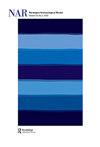伯利兹Say Kah反测绘索赔
IF 1.1
3区 历史学
0 ARCHAEOLOGY
引用次数: 0
摘要
我们在这里进行反映射吗?将象形文字的“特性限定符”叠加在晚期经典玛雅遗址考古发掘的材料分布和结构特征上,是否可以被视为对制图表示规范方法的一次变革?虽然大多数反测绘工作都集中在代表性不足群体的景观认知上,并且通常与土著土地主张或景观主权声明有关(例如,Wainwright和Bryan 2009,McAnany等人2015),但这种反测绘主张完全是对过去的投射。地理学家之间反地图绘制工作的明显反射性——无论它是赋予当地人民权力还是伤害当地人民,无论它是一个性别歧视过程,还是它在以前不存在的地方创造了边界——都没有出现在这项研究中。然而,象形文字“属性限定符”的应用可以说确实与Johnson等人(2006)所说的批判性制图素养有了共同点。批判性制图素养是一种跨现代的制图方法,它注意到了教育家Paolo Freire对批判性意识的呼吁,一直领先于土著制图和本体论。这就引出了一个问题,即晚期经典玛雅社区的土著地图绘制可能是什么感觉和样子,以及这项研究是否开始接近它?在全球范围内,大多数考古研究都是在“无文本”的背景下进行的,因为没有文献来源——无论是土著文字系统、欧洲编年史还是其他信息来源——可以对考古材料进行检查。自从20世纪90年代经典象形文字的破译开始成熟以来,象形文字对王室存在的许多方面提供了极其丰富的见解,包括政治、王朝历史和社会差异。Stephen Houston等人(2009)利用文本和图像学深入探讨了色彩美学和后来的经典玛雅关系(休斯顿,2014年),并最终探讨了年轻王室男性的特权地位,他们既是被掩盖为经典玛雅社会的主体又是代理人(休斯顿,2018年)。从这项研究和其他许多研究中,我们看到了明显的“皇家男性凝视”,这是象形文字记录的位置性,这让我们暂停了将这种凝视普遍化到晚期古典社会的所有阶层。玛雅象形文字文本中没有任何接近社会历史的内容;皇家宫廷就是一切。对于那些不支持用耐用介质绘画或雕刻的抄写员的地方,在皇家宫廷用石头、陶器或灰泥保存的文本中很少提及。也没有提到成千上万的评论本文章由计算机程序翻译,如有差异,请以英文原文为准。
Claims to Countermapping at Say Kah, Belize
Are we countermapping here? Can the overlay of hieroglyphic ‘property qualifiers’ onto distributions of materials and structural features derived from archaeological excavation at a Late Classic Maya site be considered a shake-up of normative methods of cartographic representation? While most countermapping efforts focus on landscape cognition of under-represented groups – and often are linked to Indigenous land claims or statements of landscape sovereignty (e.g. Wainwright and Bryan 2009, McAnany et al. 2015) – this claim to countermapping is entirely a projection onto the past. The pronounced reflexivity of countermapping efforts among geographers – whether it empowers or harms local peoples, whether it is a genderdiscriminatory process, or whether it creates boundaries where none previously existed – is absent from this study. Yet, this application of hieroglyphic ‘property qualifiers’ arguably does move towards common ground with what Johnson et al. (2006) refer to as critical cartographic literacy, which is a transmodern approach to cartography that is mindful of the call to critical consciousness issued by educator Paolo Freire blended with a desire to grapple with the colonialities of Western cartography, all the while forefronting Indigenous cartographies and ontologies. This brings us to the question of what an Indigenous cartography of Late Classic Maya communities may have felt and looked like and whether this study begins to approximate it? Globally, most archaeological research takes place in contexts that are ‘text free’ in the sense that there are no documentary sources – be they Indigenous writing systems, European chronicles, or other sources of information – against which archaeological materials can be examined. Ever since the decipherment of Classic hieroglyphic texts began to mature in the 1990s, hieroglyphs have provided extraordinarily rich insight on many facets of royal existence, including politics, dynastic histories, and social difference. Probing deeper, Stephen Houston et al. (2009) used texts and iconography to explore the aesthetics of colour and later Classic Maya relationality (Houston 2014), and finally the privileged position of young royal males who are both subject and agent of much that is glossed as Classic Maya society (Houston 2018). From this research and that of many others, we glimpse the decidedly ‘royal male gaze’ that is the positionality of the hieroglyphic record, which gives one pause about universalizing that gaze to all sectors of Late Classic society. Maya hieroglyphic texts contain nothing that approaches social history; the royal court was the be all and end all. For places that did not support a scribe who painted or carved in a durable medium there is scant mention in texts that are preserved in stone, pottery, or stucco at royal courts. Nor is there reference to the thousands of COMMENT
求助全文
通过发布文献求助,成功后即可免费获取论文全文。
去求助
来源期刊

Norwegian Archaeological Review
ARCHAEOLOGY-
CiteScore
2.10
自引率
0.00%
发文量
13
期刊介绍:
Norwegian Archaeological Review published since 1968, aims to be an interface between archaeological research in the Nordic countries and global archaeological trends, a meeting ground for current discussion of theoretical and methodical problems on an international scientific level. The main focus is on the European area, but discussions based upon results from other parts of the world are also welcomed. The comments of specialists, along with the author"s reply, are given as an addendum to selected articles. The Journal is also receptive to uninvited opinions and comments on a wider scope of archaeological themes, e.g. articles in Norwegian Archaeological Review or other journals, monographies, conferences.
 求助内容:
求助内容: 应助结果提醒方式:
应助结果提醒方式:


